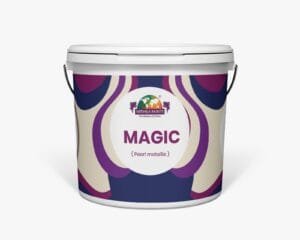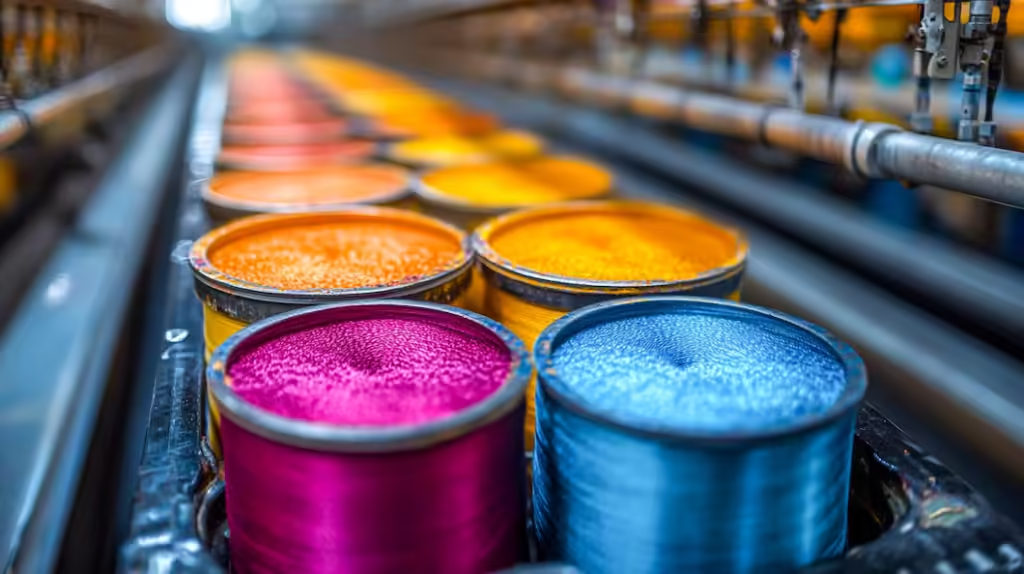Introduction to Local Paint Manufacturer
Mithila Paints is a vibrant and culturally rich representation of the Mithila region, which is predominantly situated in parts of Bihar, India. Originating from the traditional art form known as Mithila or Madhubani painting, this unique style of painting has been a significant part of local heritage and expression. The mission of Mithila Paints is to preserve this historical art form while simultaneously modernizing its application for various uses, including wall decors and home interiors. By embracing the talent of local artisans, Mithila Paints aims to provide a platform for these artists, allowing them to share their skills and stories through their work.
At the core of Mithila Paints lies a deep commitment to quality and sustainability. The materials used in the production process are often sourced locally, ensuring that the craftsmanship retains its authenticity. Furthermore, the commitment to eco-friendly practices is paramount. From using natural pigments to implementing sustainable production techniques, Mithila Paints strives to minimize its environmental footprint while promoting the use of biodegradable materials. This approach resonates well with the global trends toward sustainable living, making Mithila Paints not only a choice for art enthusiasts but also for environmentally conscious consumers.
The local context of paint manufacturing in the Mithila region plays a crucial role in the establishment of Mithila Paints. Historically, this area is known for its vibrant artistic community that dates back centuries. The revival of these traditional painting techniques into the realm of modern paint manufacturing represents a significant opportunity for local artisans, who can engage directly with contemporary markets. This local initiative not only aids in economic development but also reinforces the cultural identity of the Mithila region, showcasing the potential of regional paints to gain recognition in national and global markets.
The History of Mithila Paints
Mithila Paints traces its origins to the culturally rich Mithila region in Bihar, India. Renowned for its distinctive art forms, the area has historically been a hub for local craftsmanship, particularly through its traditional paintings. Mithila Paints was established with the objective of preserving this unique artistic heritage while also providing artisans a sustainable platform to showcase their skills. The founding of the company marked a pivotal moment in the documentation and commercialization of these local art forms.
In the early stages of its journey, Mithila Paints focused on reviving traditional techniques and styles of Mithila painting, which often depict mythological stories and everyday life. The organization began collaborating with local artists and craftsmen, empowering them to create art that resonates with social and cultural narratives. As the appreciation for folk art gained momentum, Mithila Paints began to expand its reach, serving as a bridge connecting local artisans to a broader audience. By promoting their artwork through various channels, including exhibitions and online platforms, the company significantly contributed to the preservation of an art form that has been passed down through generations.
Over the years, Mithila Paints has reached several key milestones that emphasize its commitment to local craftsmanship. The introduction of workshops and training programs has enabled younger generations to learn and engage with Mithila art, ensuring its continuity. Additionally, by incorporating eco-friendly practices in their production processes, the company has also aligned itself with contemporary sustainability goals. This unwavering dedication to the craft and the communities involved has solidified Mithila Paints’ position not only as a manufacturer of paint but as a custodian of the region’s rich artistic legacy.

Product Range and Innovations
Mithila Paints has established itself as a prominent player in the local paint manufacturing industry, offering a diverse range of products that cater to varying customer needs. The company’s product line includes an extensive assortment of paints, such as emulsions, distempers, and enamels. These options are made available in a myriad of finishes, including matte, satin, and glossy, thus allowing consumers to select a product that best fits their aesthetic preferences and functional requirements.
One of the standout features of Mithila Paints is its commitment to color diversity. With an expansive palette that encompasses vibrant shades and subtle tones, Mithila Paints ensures that homeowners and professionals alike can find the perfect color for their projects. Additionally, the company often launches seasonal collections that reflect current design trends, further enhancing their product offerings.
Mithila Paints has also ventured into innovative territories by embracing eco-friendly products. The company recognizes the growing demand for sustainable solutions in the paint industry and has developed formulations that are water-based and low in volatile organic compounds (VOCs). These environmentally conscious products not only minimize the impact on health and the environment but also provide users with durable and high-quality finishes.
Moreover, the introduction of unique formulations is a hallmark of Mithila Paints’ innovative approach. For instance, they have developed self-cleaning paints that repel dirt and stains, reducing the frequency of maintenance and making them quite appealing for both residential and commercial applications. This combination of traditional craftsmanship and modern technology signifies Mithila Paints’ commitment to overcoming industry challenges and meeting consumer demands.

Quality Control and Manufacturing Process
The manufacturing process of Mithila Paints is a meticulous journey that underscores the commitment to quality and artisan craftsmanship. From the sourcing of raw materials to the final inspection of finished products, every step is carefully planned to ensure that each piece reflects the rich cultural heritage of Mithila art. The quality control measures employed throughout this process are essential in maintaining the integrity and appeal of the paints.
At the heart of Mithila Paints’ production lies a dedication to using locally sourced materials. For instance, natural dyes derived from plants, minerals, and clay are utilized, ensuring a vibrant yet earthy palette that resonates with traditional artistry. This focus on local sourcing not only supports the regional economy but also contributes to sustainability and reduced environmental impact. The artisans possess an intrinsic understanding of these materials, which is integral in creating unique color combinations and textures.
The manufacturing process begins with the preparation of materials, where artisans skillfully mix pigments with binders to create a smooth and usable paint. The mixing is followed by a rigorous testing phase, where small samples are assessed for color accuracy, consistency, and durability. These tests are imperative as they ensure that the final product meets the stringent quality standards associated with Mithila Paints. Artisans are trained to discern subtle differences, which is a hallmark of quality control in this field.
Once the paints are deemed satisfactory, the production continues at dedicated workshops where artisans apply their skills to create vibrant and intricate designs on various mediums, including canvas and wall murals. Each piece goes through a final inspection, where any discrepancies are rectified to uphold the brand’s reputation for excellence. In conclusion, the manufacturing process of Mithila Paints, accentuated by stringent quality control measures and the use of local materials, plays a pivotal role in preserving the authenticity and richness of Mithila art while catering to modern aesthetic preferences.
Community Engagement and Social Responsibility
Mithila Paints is not only a manufacturer of exquisite paints but also a vital contributor to the local community in which it operates. The company actively engages with local artists and craftspeople, providing them with platforms to showcase their talent and heritage. By promoting traditional Mithila art, Mithila Paints ensures that these unique cultural expressions continue to thrive and receive recognition beyond the borders of their origin.
One of the standout initiatives that Mithila Paints has undertaken is its collaboration with local artisans to create a range of products that embody both traditional techniques and contemporary designs. This collaboration empowers artists by providing them with fair compensation and resources, which allows them to sustain their crafts and even gain international exposure. Such efforts play a crucial role in preserving the history and artistry of the Mithila region, transforming local talent into valuable assets in the global market.
Furthermore, Mithila Paints commitment to corporate social responsibility (CSR) extends beyond artistic collaboration. The company has implemented programs aimed at improving the overall quality of life in the region. These initiatives include establishing educational scholarships for underprivileged children, funding health camps to provide essential medical care, and organizing workshops that educate locals about sustainable practices. By integrating social responsibility into its business model, Mithila Paints underscores its role as a proactive community member dedicated to fostering development.
Through these various initiatives, Mithila Paints not only bolsters the local economy but also enriches the social fabric of the community. The company’s responsiveness to the needs of its surroundings exemplifies the potential of local businesses to effect positive change. As Mithila Paints continues to flourish, its community engagement strategies will no doubt serve as a model for other enterprises aiming to harmonize economic success with responsible social action.
Customer Testimonials and Case Studies
Mithila Paints has garnered a significant reputation through the experiences shared by satisfied customers who appreciate both the quality and aesthetic charm of their products. One notable testimonial comes from an interior designer who utilized Mithila Paints for a traditional home renovation project. The designer praised the vibrant colors and intricate patterns, emphasizing how they not only enhanced the visual appeal of the spaces but also resonated with the cultural heritage of the region. Such positive feedback highlights the brand’s commitment to quality and authenticity in fostering a deep connection with the local tradition.
Another case study involves a community center that opted for Mithila Paints to create an inviting and educational environment for children. The brightly colored murals, featuring motifs characteristic of Mithila art, attracted the children’s attention and sparked a sense of joy and curiosity. The project leader noted that the transformative power of Mithila Paints was evident, as the center fostered creativity and learning among the young visitors. This successful implementation showcases Mithila Paints’ versatility, making them suitable for both residential and community projects.
Beyond aesthetic appeal, customers have also highlighted the durability and eco-friendliness of Mithila Paints. One homeowner shared that after using Mithila Paints for an exterior project, they were impressed by the paint’s resilience against harsh weather conditions while retaining its vibrant hues. Such reliability builds trust among consumers, assuring them that investing in Mithila Paints leads to long-lasting beauty. The combination of cultural significance and practical performance positions Mithila Paints as a top choice for those looking to draw inspiration from tradition while ensuring functional longevity.
The Importance of Supporting Local Manufacturers
Supporting local paint manufacturers, such as those producing Mithila paints, carries significant implications for the economy, environment, and cultural preservation. By choosing to buy locally produced paints, consumers contribute to the economic vitality of their communities. When local manufacturers thrive, they create jobs and stimulate the local economy. This economic stimulation not only helps maintain existing employment levels but also fosters the growth of new businesses, ultimately leading to a more robust local market. Moreover, local businesses are more likely to invest in their communities, contributing to improved infrastructure and quality of life.
From an environmental standpoint, sourcing paints from local manufacturers reduces the carbon footprint associated with transportation. Imported products often travel long distances before reaching consumers, leading to higher emissions. By purchasing locally produced paints, consumers can minimize these environmental impacts, supporting sustainability. Furthermore, local manufacturers are often more attuned to the specific environmental concerns of their communities, allowing them to adopt practices that align with local sustainability goals. This includes the use of eco-friendly materials and the promotion of non-toxic paint options, which ultimately benefit both the environment and public health.
Culturally, supporting local paint manufacturers like Mithila plays a crucial role in preserving traditional techniques and styles. Mithila painting, with its rich heritage and distinctive artistry, reflects the cultural identity of its region. When consumers choose to buy these local products, they not only promote traditional craftsmanship but also encourage the continuation of these art forms for future generations. As such, locally produced paints are more than just aesthetic choices; they represent a commitment to sustaining the cultural heritage and artistic legacies of communities.
In conclusion, the importance of supporting local manufacturers transcends mere economic transactions. It encompasses vital contributions to the local economy, environmental sustainability, and the preservation of cultural heritage, thereby reinforcing the significance of choosing products made within one’s community.

Future Trends in the Paint Industry
The paint industry is undergoing significant transformation driven by several pivotal trends that emphasize sustainability, technological advancements, and shifting consumer preferences. As environmental consciousness continues to rise among consumers, manufacturers are increasingly investing in sustainable practices. This includes the development of eco-friendly paints, which utilize low volatile organic compounds (VOCs) and biodegradable materials. Mithila Paints, like many local manufacturers, can thrive by prioritizing these sustainable solutions, aligning their products with consumer demands for healthier living environments.
Technological innovation is another key trend shaping the future of the paint industry. The integration of smart technology, such as paint that changes color with temperature or humidity, is gaining traction. The emergence of automation in production processes also enhances efficiency and consistency in product quality. As Mithila Paints monitors these developments, adopting smart manufacturing practices and exploring advanced paint formulations could provide a competitive edge in a market that increasingly emphasizes innovation.
Furthermore, consumer preferences are shifting towards personalization and unique aesthetics, prompting a demand for customized paint options. The rise of social media platforms has given consumers a voice, influencing their design choices and preferences. To remain relevant, Mithila Paints should consider expanding their product lines to offer bespoke color mixing services or collaborations with local artists to create limited-edition collections. By tapping into the growing trend of individuality in home decors, Mithila Paints can appeal to a broader audience.
In conclusion, the future of the paint industry appears promising, characterized by a blend of sustainability, innovation, and personalization. Mithila Paints can adapt and remain competitive by embracing these trends, ensuring they not only meet consumer expectations but also contribute positively to environmental and social landscapes.
Conclusion
As we have explored throughout this blog post, Mithila Paints has become a prominent player in the local paints manufacturing scene. Its unique artistic style, rooted in the rich cultural heritage of the Mithila region, sets it apart from conventional paint manufacturers. Mithila Paints stands as a testament to how traditional art can seamlessly blend with modern manufacturing processes, creating products that are not only environmentally friendly but also visually striking.
The vision of Mithila Paints is to not only preserve and promote the artistic traditions of the Mithila community but also to make these offerings accessible to a broader audience. Through a commitment to quality and innovation, Mithila Paints aims to inspire consumers to appreciate the value of local craftsmanship in a market that is often dominated by mass-produced alternatives. This emphasizes the importance of supporting local manufacturers who are dedicated to sustainability and cultural heritage.
In addition, Mithila Paints is focused on expanding its reach while maintaining its authentic representation of the Mithila style. By collaborating with local artists and incorporating their designs into products, the brand aspires to elevate the profile of indigenous art forms in the paint industry. Furthermore, it seeks to foster a connection between consumers and the artisans, emphasizing the stories behind each design.
Supporting Mithila Paints and other local manufacturers not only nurtures economic growth within the community but also contributes to the preservation of valuable cultural elements. It is crucial for consumers to explore the offerings from these manufacturers, thereby making informed choices that prioritize uniqueness and sustainability. By choosing local products, we can help ensure that the vibrant tradition of Mithila painting continues to thrive for generations to come.


